
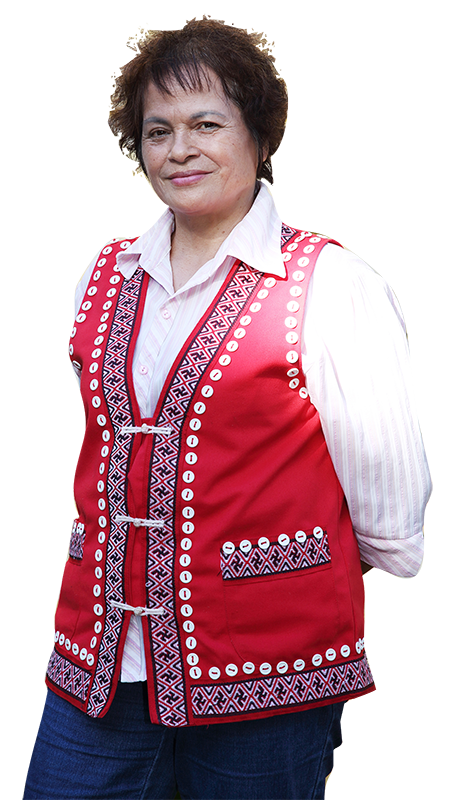
“I like the natural scent of bamboo and rattan. Although it’s hard work - you have to collect the materials in the mountains and process them afterwards, I just really enjoy doing it.”
Plain weave, twill weave, interlaced, spiral, triangle patterns...with a pointed awl in her hand, Away Dayen Sawan weaves the tough Major Jenkin’s rattan, now soft and malleable strips, back and forth and pulls them together tightly. Away Dayen Sawan has been working as a weaver for more than thirty years; and throughout these decades, her great passion for the craft has never wavered.
In Away Dayen Sawan’s memory, her father was a man who could easily weave natural materials, such as bamboo and rattan, into daily life items. His products were so good that the Non-indigenous people living nearby would come and buy bamboo and rattan items from him. In fact, the SaySiyat people are well-known for their outstanding skills in weaving. During the Japanese Colonial Period, many Japanese went up the mountains to trade with the SaySiyat and order beautifully-made bamboo and rattan items. However, as the people’s lifestyles became modernized and the elders gradually passed away, traditional bamboo and rattan weaving was slowly dying out since there was no one to carry on the tradition. “When I started to learn bamboo and rattan weaving, there weren’t many exquisite bamboo and rattan weaving items left in the community. There were only a few daily life items.” said Away Dayen Sawan.
In 1984, Miaoli County’s Nanzhuang Township Office worked with a couple of neighboring communities and invited bamboo and rattan master weaver Chang Hsien-Ping to come and teach weaving courses. With her children old enough to go to elementary school, Away Dayen Sawan, then in her thirties, had the free time to sign up for the course, and thus began her journey into the world of bamboo and rattan weaving.
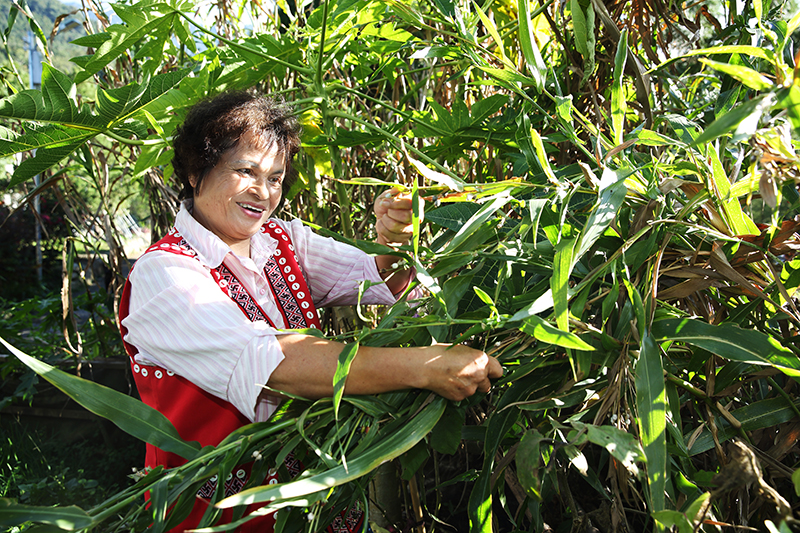
Trained by the Master
Learning the Basics of Bamboo and Rattan Weaving
Away Dayen Sawan described that when she began to learn bamboo and rattan weaving, there was this unexplainable attraction. She was completed hooked. “Back when I first started, I would work until midnight. I was thinking about how to weave and display the patterns I had in my head.” Her husband was concerned about Away Dayen Sawan’s wellbeing. “My husband would complain that I should get some rest!” Yet it is also because of her husband’s support, Away Dayen Sawan is able to carry on her work in bamboo and rattan weaving.
Learning how to weave takes time. The students have to master many weaving techniques and also learn how to split and cut the materials. Back then most of the community women not only had to tend to the home, but also work to support the family income. It required a strong will to dedicate extra time and effort to learning bamboo and rattan weaving. “Initially, there were about fifty or so women in my class. But later they gradually dropped out due to family economic issues. Only I kept on going. Now these former classmates come to me to learn the craft.” said Away Dayen Sawan with a smile.
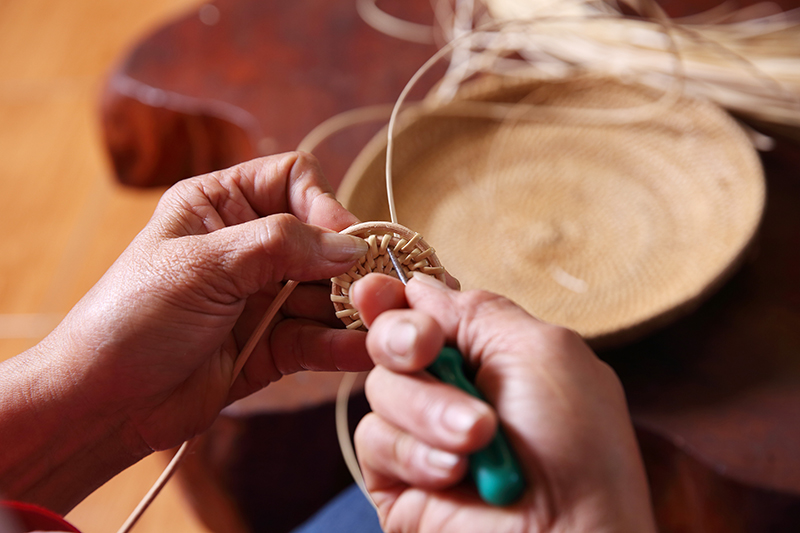
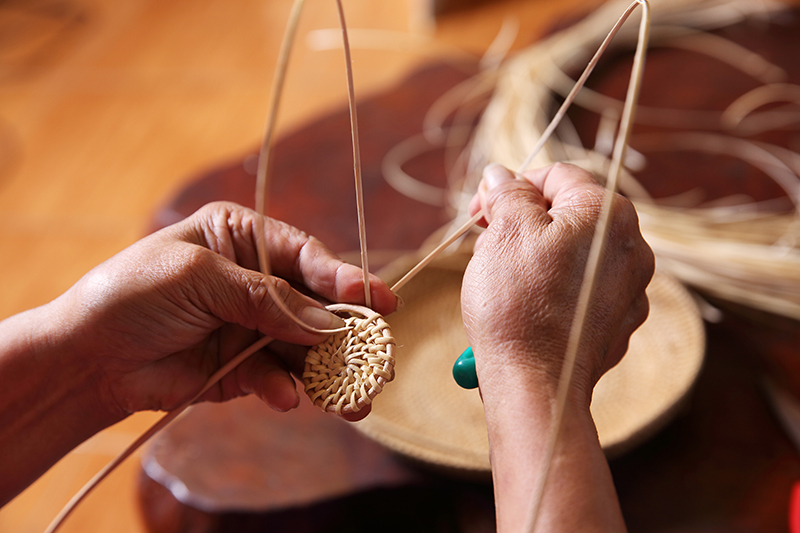
After the community weaving course came to an end, Chang asked Away Dayen Sawan if she was willing to come to his factory in Zhunan and help produce some vases that were to be exported to Japan. Away Dayen Sawan agreed immediately. For the next decade, she would commute to Zhunan every morning at six-thirty, then return home at six-thirty in the evening without fail.
While she worked for her teacher and improved her own skills, Away Dayen Sawan thought about how to combine weaving with her traditional SaySiyat culture. After her training was completed, Away Dayen Sawan returned to her community and opened Ponglai Workshop. She kept in touch with her teacher Chang Hsien-Ping. “Now when I run into problems in my weaving, I still go to Mr. Chang for advice. He is always happy to help.” Away Dayen Sawan said with a shy smile.
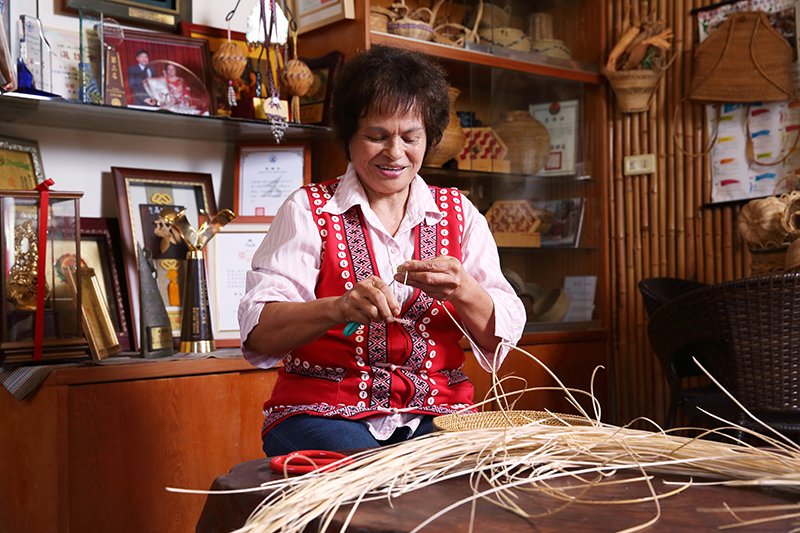
Not Only a Skill
But Artwork Infused with Traditional SaySiyat Culture
Two years after Away Dayen Sawan picked up bamboo and rattan weaving, the SaySiyat celebrated paSta’ay - a major ritual held every ten years. “I had been thinking about integrating our SaySiyat story patterns into my work to reclaim our traditional culture.” Using natural materials such as ramie fibers, bamboo tubes, and Job’s tears grains, Away Dayen Sawan handmade her family’s traditional Tabaa’sang (hip bells). The Job’s tears grains, which has a grey-white base color and transparent sheen, shine like natural gem stones; and the bamboo tubes decorated with the grains and tied to the hips sway with the dancer’s quick movements, creating a string of crisp rhythmic sounds. Away Dayen Sawan successfully recreated the traditional PaSta’ay Tabaa’sang.
“When I was little, the Tabaa’sangs were already made with modern materials from the outside world: cloth, sequins, and brass pipes.” When she asked the elders to describe the traditional Tabaa’sang to her, they expressed that the traditional Tabaa’sang was completely handmade with ramie fibers nets, Job’s tears grains beads, and bamboo tubes. “This is the first piece of work in which I attempt to rediscover my traditional culture.”
For Away Dayen Sawan, bamboo and rattan weaving is not only a skill, but, more importantly, a connection to her childhood memory. “I grew up with these bamboo and rattan items. I feel a deep connection with them.”
The warm, smooth texture of bamboo and rattan reminds Away Dayen Sawan of her childhood. She has been living in the mountains all her life, and remembers the time when everything - household tools, daily life items, hunting equipment, clothing - was made with natural materials found in the mountains which were abundant with bamboo, Major Jenkin’s rattan, ramie, and wood. She often followed her father into the mountains with a bamboo basket on her back to collect the materials. Later she would watch her father turn the plants into rice sieves, back baskets, and wine vessels.
“When I was young, only men were allowed to do bamboo and rattan weaving. Because it is a lot of work: you have to go into the mountains to collect the materials, and it takes a lot of effort to process the materials afterwards.” Although she grew up watching her father weave, Away Dayen Sawan was already an adult when she began to learn the basics of weaving. Back then she would often go back home to ask for guidance from her father and other elders. She would also observe the SaySiyat bamboo and rattan weavings preserved in communities and museums, and carefully study their structures in detail. “I should have asked him about weaving sooner,” Away Dayen Sawan said with a tinge of regret, “because my father passed away soon after.”
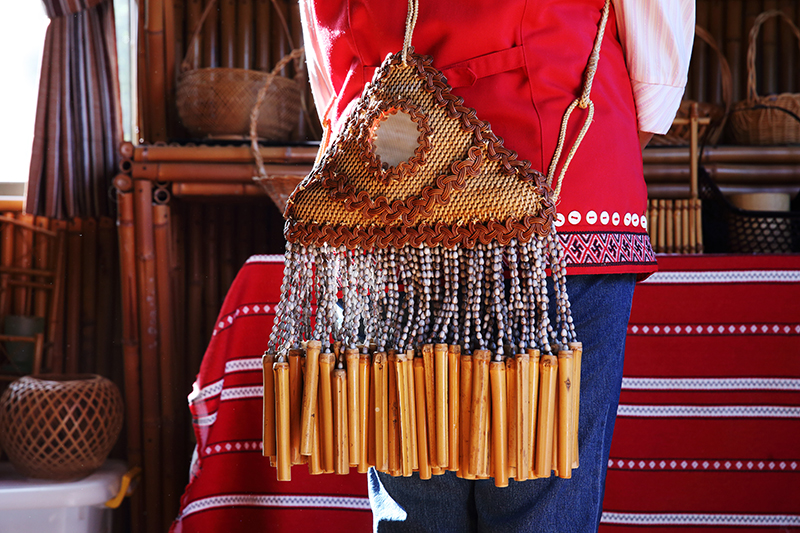
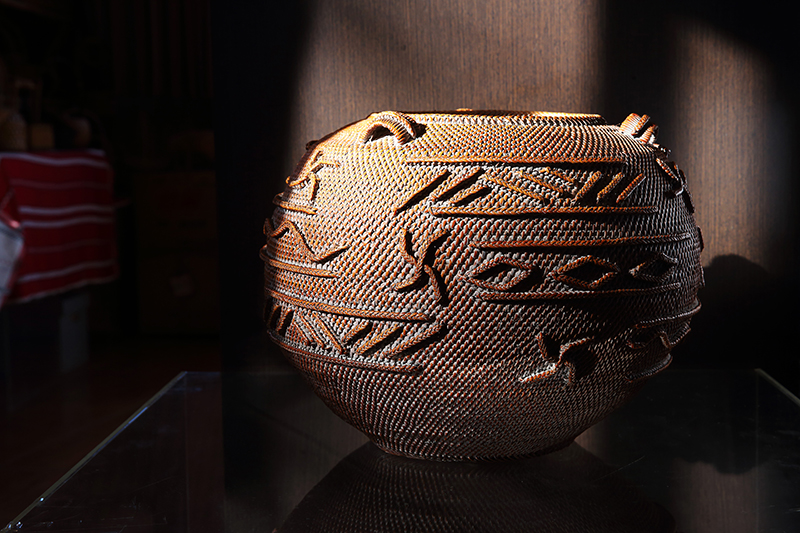
Carrying on SaySiyat Culture
and Refusing to Turn Weavings into Commercialized Products
“A lot of factories want to turn my work into commercialized products, or asked me to make them with materials that are easier to manipulate. For example, use plastic strips instead of bamboo and rattan. But I turned down all of them.” Of course Away Dayen Sawan understands that replacing the natural plants with modern materials would make the weaving process faster and easier, and therefore make more money. “I don’t know why, I just like the scent and texture of bamboo and rattan.”
Unlike other people who earn money by taking orders, Away Dayen Sawan followed the footsteps of Chang Hsien-Ping and focuses on culture transmission and art creation instead. She joins modern weaving skills with SaySiyat people’s totem patterns, such as the wa:on 卍 (“daughter of thunder”), Porong (“Chinese silver grass knot”), and dragon and serpent patterns, to create pieces that fuse tradition with innovation. Her work has won much recognition, including the National Craft Awards and Weaving Crafts Awards.
Many of the bamboo and rattan items made by community members were lost due to the fact people did not value traditional crafts as we do now. Nowadays, a lot of visitors from home and abroad would ask if Away Dayen Sawan is willing to sell her work. She always declines, expressing that it is impossible for her to produce significant quantities since making one piece of weaving already requires a fair amount of time and effort. Besides, she hopes to leave behind some weavings that belong exclusively to the SaySiyat culture.
Because she is so actively involved in local public affairs, the community members have elected Away Dayen Sawan as the very first female leader of Ponglai Community. “Now that I’m the community leader, I don’t have extra time to give lessons.” Yet the determined weaver is not giving up her work in SaySiyat craft and skills transmission for good. “After I retire from this post two years later, I will focus on passing on our bamboo and rattan weaving techniques.”





